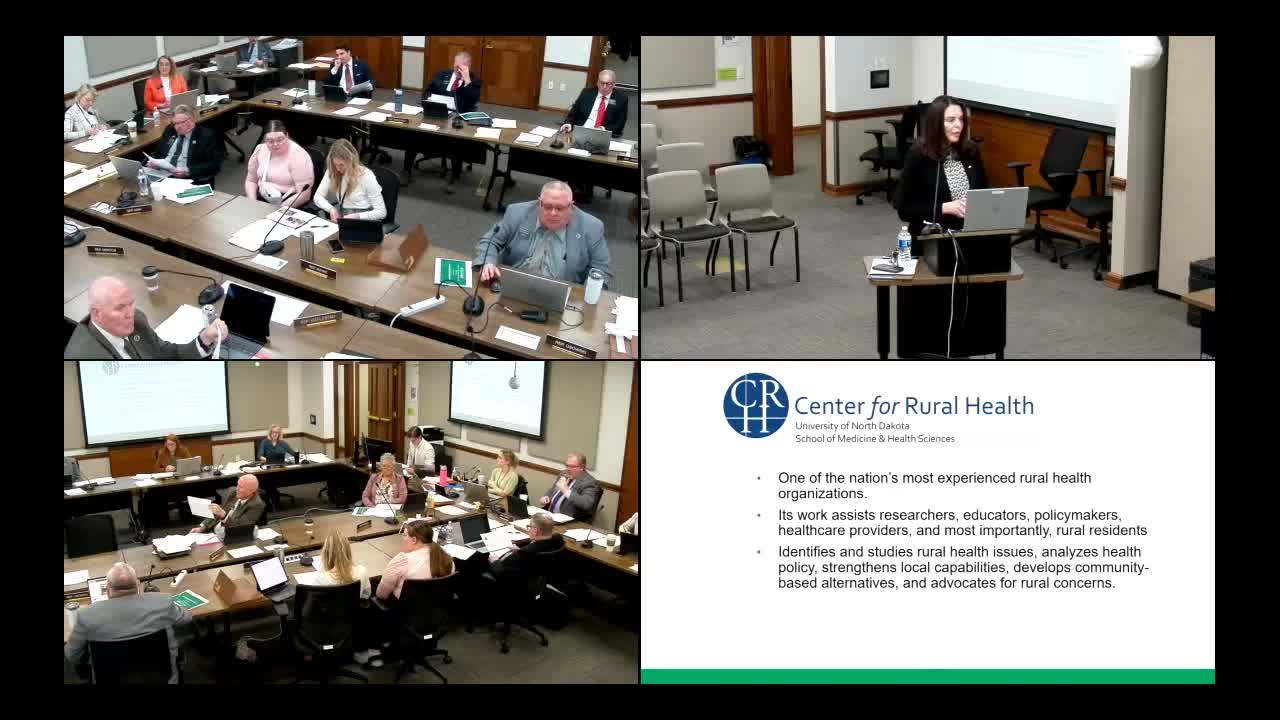University of North Dakota expands health education amid NIH funding concerns
March 11, 2025 | Education, House of Representatives, Legislative, North Dakota
This article was created by AI summarizing key points discussed. AI makes mistakes, so for full details and context, please refer to the video of the full meeting. Please report any errors so we can fix them. Report an error »

In a recent meeting of the North Dakota State Legislature's House Education Committee, discussions centered on the pressing challenges and opportunities facing the state's medical education and public health landscape. The atmosphere was charged with a sense of urgency as representatives from the University of North Dakota outlined the critical role of health policies and funding in shaping the future of healthcare in the region.
One of the key points raised was the potential impact of federal funding caps on the National Institutes of Health (NIH). The University of North Dakota, a leading recipient of NIH funding, currently operates under a 41% indirect cost cap. However, proposed reductions to 15% could result in significant financial losses, jeopardizing ongoing and future research initiatives. This concern highlights the delicate balance between federal support and local health advancements.
The university's eighth biennial report was also a focal point of the discussion, providing legislators with vital data on workforce needs and public health strategies. This report not only outlines the current state of healthcare resources but also introduces a live dashboard feature, allowing real-time access to information about primary care physicians and chronic diseases across districts. This innovation aims to enhance transparency and responsiveness in addressing healthcare needs.
Moreover, the meeting underscored the importance of partnerships with six health systems across North Dakota. These collaborations are essential for expanding clinical placements for medical students, a growing concern due to bottlenecks in training environments. The university's leadership is actively engaging with health system executives to explore solutions for increasing student training opportunities and improving retention rates in the medical field.
As the conversation unfolded, it became clear that the University of North Dakota's medical school is navigating a challenging yet promising landscape. With a lean operational model and a strong emphasis on community faculty, the institution boasts a favorable student-to-faculty ratio, positioning it well among its peers nationally. The commitment to training and retaining healthcare professionals is vital for ensuring that North Dakota can meet its future healthcare demands.
In conclusion, the discussions at the House Education Committee meeting reflect a pivotal moment for North Dakota's healthcare education and public health initiatives. As the state grapples with funding uncertainties and workforce challenges, the collaborative efforts between educational institutions and health systems will be crucial in shaping a resilient healthcare future for all North Dakotans.
One of the key points raised was the potential impact of federal funding caps on the National Institutes of Health (NIH). The University of North Dakota, a leading recipient of NIH funding, currently operates under a 41% indirect cost cap. However, proposed reductions to 15% could result in significant financial losses, jeopardizing ongoing and future research initiatives. This concern highlights the delicate balance between federal support and local health advancements.
The university's eighth biennial report was also a focal point of the discussion, providing legislators with vital data on workforce needs and public health strategies. This report not only outlines the current state of healthcare resources but also introduces a live dashboard feature, allowing real-time access to information about primary care physicians and chronic diseases across districts. This innovation aims to enhance transparency and responsiveness in addressing healthcare needs.
Moreover, the meeting underscored the importance of partnerships with six health systems across North Dakota. These collaborations are essential for expanding clinical placements for medical students, a growing concern due to bottlenecks in training environments. The university's leadership is actively engaging with health system executives to explore solutions for increasing student training opportunities and improving retention rates in the medical field.
As the conversation unfolded, it became clear that the University of North Dakota's medical school is navigating a challenging yet promising landscape. With a lean operational model and a strong emphasis on community faculty, the institution boasts a favorable student-to-faculty ratio, positioning it well among its peers nationally. The commitment to training and retaining healthcare professionals is vital for ensuring that North Dakota can meet its future healthcare demands.
In conclusion, the discussions at the House Education Committee meeting reflect a pivotal moment for North Dakota's healthcare education and public health initiatives. As the state grapples with funding uncertainties and workforce challenges, the collaborative efforts between educational institutions and health systems will be crucial in shaping a resilient healthcare future for all North Dakotans.
View full meeting
This article is based on a recent meeting—watch the full video and explore the complete transcript for deeper insights into the discussion.
View full meeting
